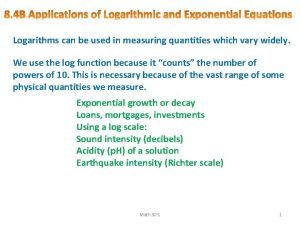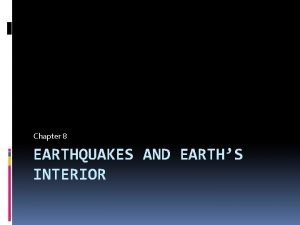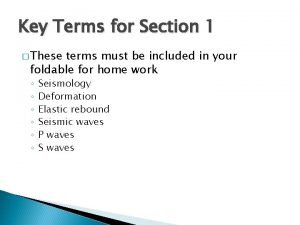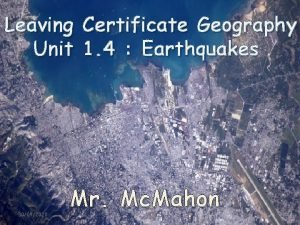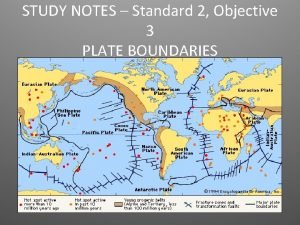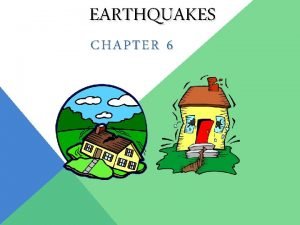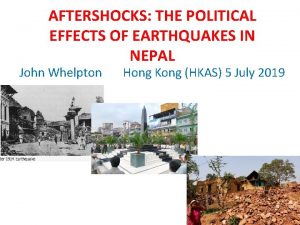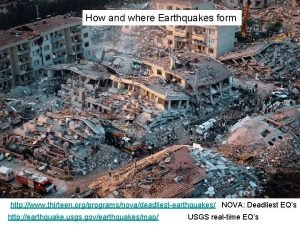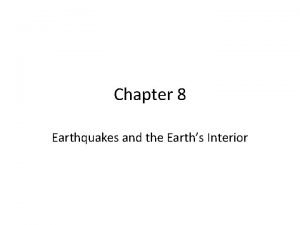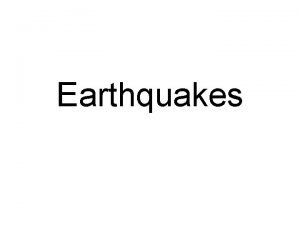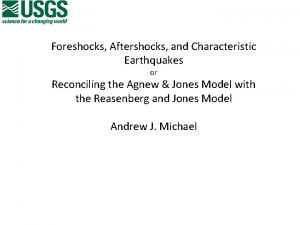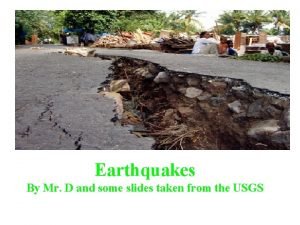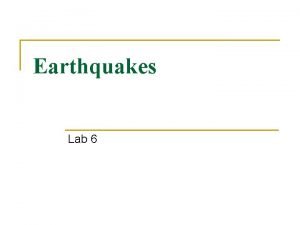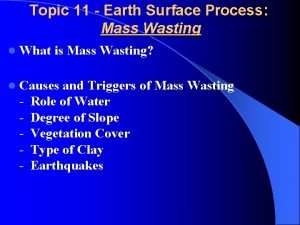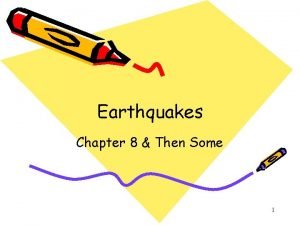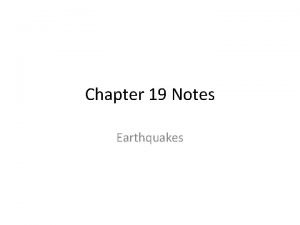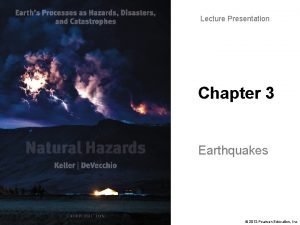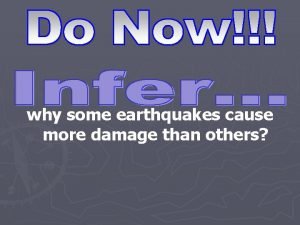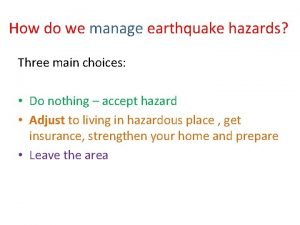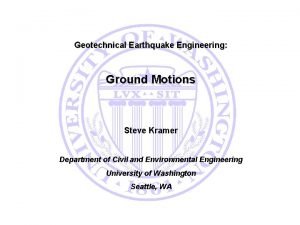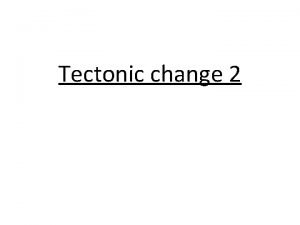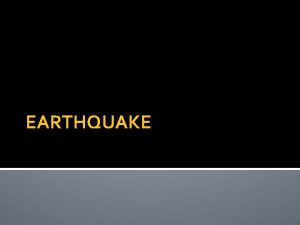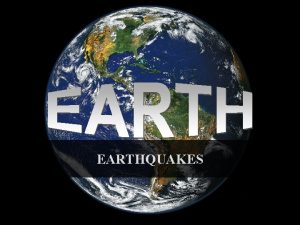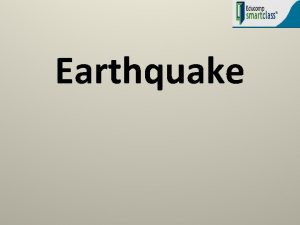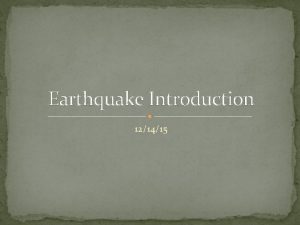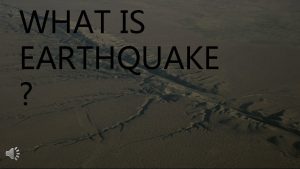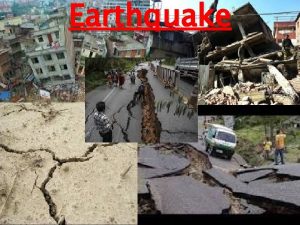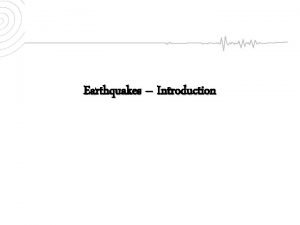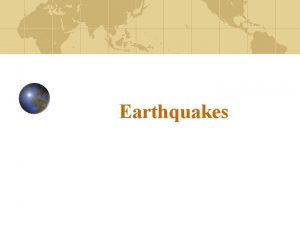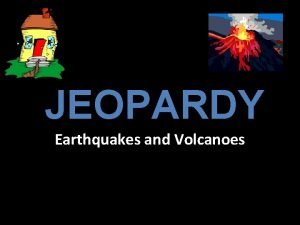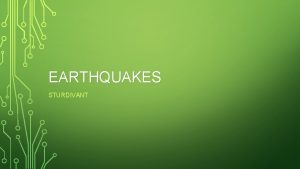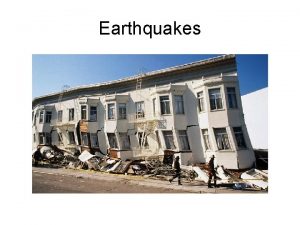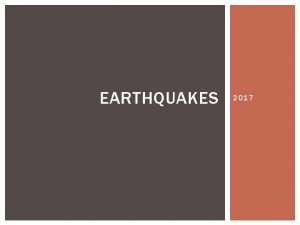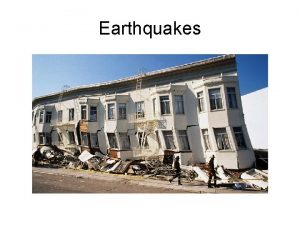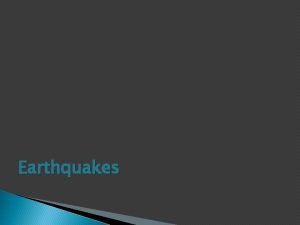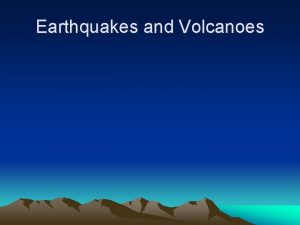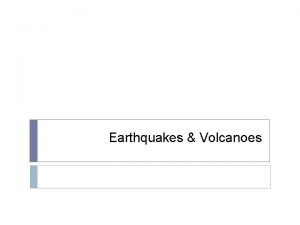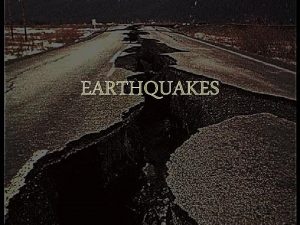Earthquakes What is an Earthquake o Earthquakes Earthquakes































- Slides: 31

Earthquakes!!!

What is an Earthquake? o Earthquakes: Earthquakes Vibrations (seismic waves) within Earth materials are produced by the rapid release of energy ü Earth’s crust is in constant motion because of tectonic forces ü Earth’s crust can store elastic energy ü When forces exceed the elastic limits and structural strength of the rocks, the rocks will break and/or move producing vibrations that travel outward in all directions

Earthquakes o The actual place underground where the rocks break producing vibrations is called the focus. o The place on the surface directly above the focus is called the epicenter.

Animation: http: //highered. mcgrawhill. com/olcweb/cgi/pluginpop. cgi? it=swf: : 640: : 480: : /sites/dl/free/0072402466/30425/16 _04. swf: : Fig. %20%2016. 4%20 -%20 Focus%20 of%20 an%20 Earthquake

What causes Earthquakes? ü Movement along any fault: occurs when the energy exceeds the friction holding the sides of the fault together and is suddenly released ü Earthquakes happen at all three types of boundaries!! (Divergent, convergent, and transform) ü Movement of magma (volcanic) ü Volcanic eruptions

http: //earthquake. usgs. gov/earthquakes/map/

http: //earthquake. usgs. gov/earthquakes/map/



Ohio’s Fault Lines


Fault Lines & Earthquakes

Seismic Waves • Seismic waves are vibrations that travel through the earth carrying energy released during an earthquake. • They carry the energy of an earthquake away from the focus outward in all directions. • Three kinds of seismic waves: 1. P waves 2. S waves 3. surface waves

Seismic Waves

3 Types of seismic Waves ü P waves (primary waves) Compressional wave § particles vibrating Parallel to the direction the wave travel (they are longitudinal Push Pull waves) § Travel through solids, liquids & gases - all Physical matter § Travels the fastest – Phastest § Does not cause damage

P Waves -- Primary Waves Compression or longitudinal Waves The medium is vibrating and particles are compressed and decompressed. Seismic waves can be longitudinal. These are called P -waves. They travel faster than S-waves and arrive first at distant seismic stations. P-waves can travel through solids liquids or gasses.

Another view of the particles vibrating back and forth This is what is happening to the earth when a P wave travels through – the molecules that make up the earth vibrate as energy travels through.

Types of Waves ü S wave (secondary wave, Shear wave) § Waves move at up and down. (right angles) § Can pass through solids only (Solely Solids) § Travels slower than P waves. § Part of the “body wave” that will eventually cause damage.

Secondary Wave (S Wave) The energy moves through the medium, but the medium moves back and forth perpendicular to the wave energy

Even though this picture shows a sound wave, the fact that the waves spreads out in all directions is the important thing.

Types of Waves ü L wave (long wave; also called surface wave) • Move up and down & side to side • Travels through only solids • SLOWEST Wave • MOST DANGEROUS

Surface Wave in an Earthquake How would this feel if you were in an earthquake? If you watched a surface wave move through a very large parking lot, what would it look like?


How do we Measure Earthquakes? Earthquake waves are recorded by a seismograph and the recording of waves on paper is called seismogram

How do we Measure Earthquakes? ü Magnitude: Magnitude a measure of the strength or amount of energy released during an earthquake ü Richter Scale: Scale Measures the amplitude of earthquake waves on seismograms § Scale from 1 -10



Earthquake Dangers o Most injuries and deaths are caused by falling objects and most property damage results from fires that start o Ocean waves caused by earthquakes are called seismic sea waves, or tsunamis. http: //video. nationalgeographic. com/video/n ews/japan-tsunami-2011 -vin


Tsunami—December 2004 http: //www. bedford. k 12. ny. us: 16080/flhs/science/images/tsunami 2004/

 Http://earthquake.usgs.gov/earthquakes/map/
Http://earthquake.usgs.gov/earthquakes/map/ Btn earthquakes
Btn earthquakes Causes of earthquake
Causes of earthquake Chapter 8 earthquakes and earth's interior
Chapter 8 earthquakes and earth's interior Elastic rebound
Elastic rebound A large crack in the earth formed by a river or earthquakes
A large crack in the earth formed by a river or earthquakes Richter scale range
Richter scale range Frequent earthquakes in an area may indicate *
Frequent earthquakes in an area may indicate * Chapter 8 section 3 earthquakes and society answer key
Chapter 8 section 3 earthquakes and society answer key Liquefaction occurs when seismic waves cause __________.
Liquefaction occurs when seismic waves cause __________. Earthquakes
Earthquakes Why do earthquakes occur
Why do earthquakes occur Chapter 8 earthquakes and earth's interior
Chapter 8 earthquakes and earth's interior The point on the ground directly above the focus
The point on the ground directly above the focus Earthquakes
Earthquakes Define natural disasters
Define natural disasters Normal fault definition
Normal fault definition Do earthquakes happen
Do earthquakes happen Chapter 19 earthquakes
Chapter 19 earthquakes In what section of earth do earthquakes happen?
In what section of earth do earthquakes happen? Diastrophic meaning
Diastrophic meaning Crescent-shaped cliffs at the head of a slump
Crescent-shaped cliffs at the head of a slump Chapter 8 quiz 1
Chapter 8 quiz 1 Chapter 8 earthquakes and volcanoes
Chapter 8 earthquakes and volcanoes Chapter 19 earthquakes
Chapter 19 earthquakes 5 effects of earthquakes
5 effects of earthquakes Why do some earthquakes cause more damage than others
Why do some earthquakes cause more damage than others Taipei 101 damper
Taipei 101 damper Geotechnical earthquake engineering kramer
Geotechnical earthquake engineering kramer Premao
Premao Grief is like an earthquake
Grief is like an earthquake San francisco bridge collapse earthquake
San francisco bridge collapse earthquake
